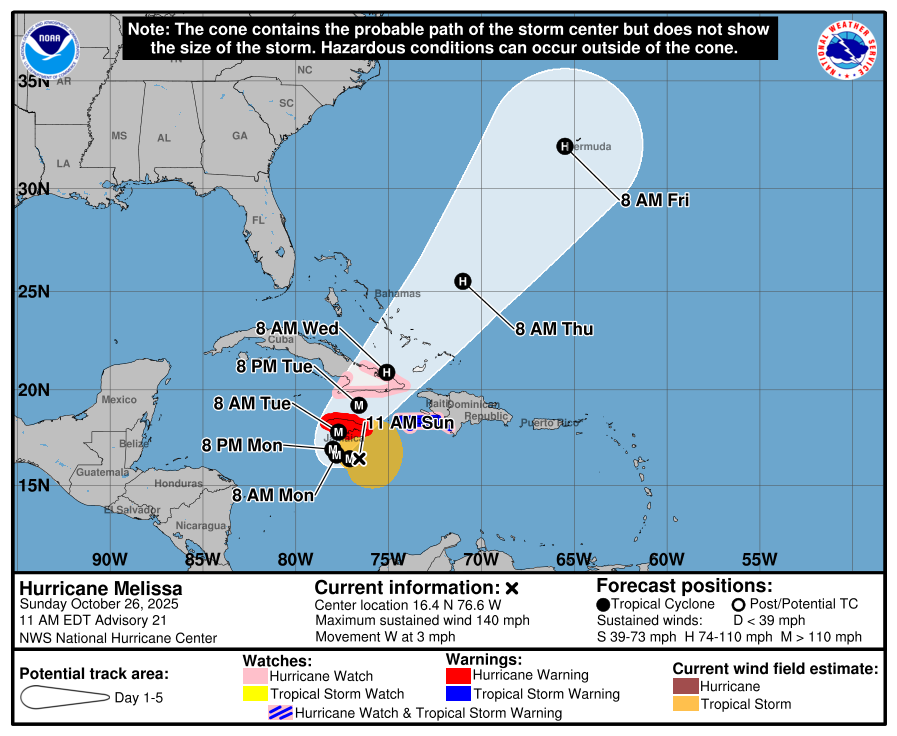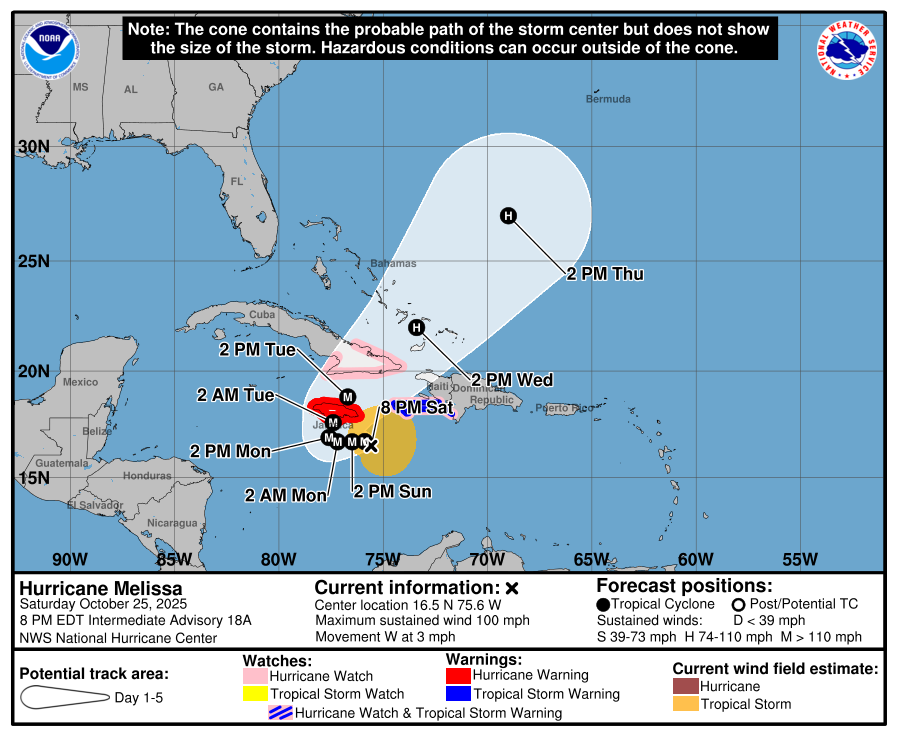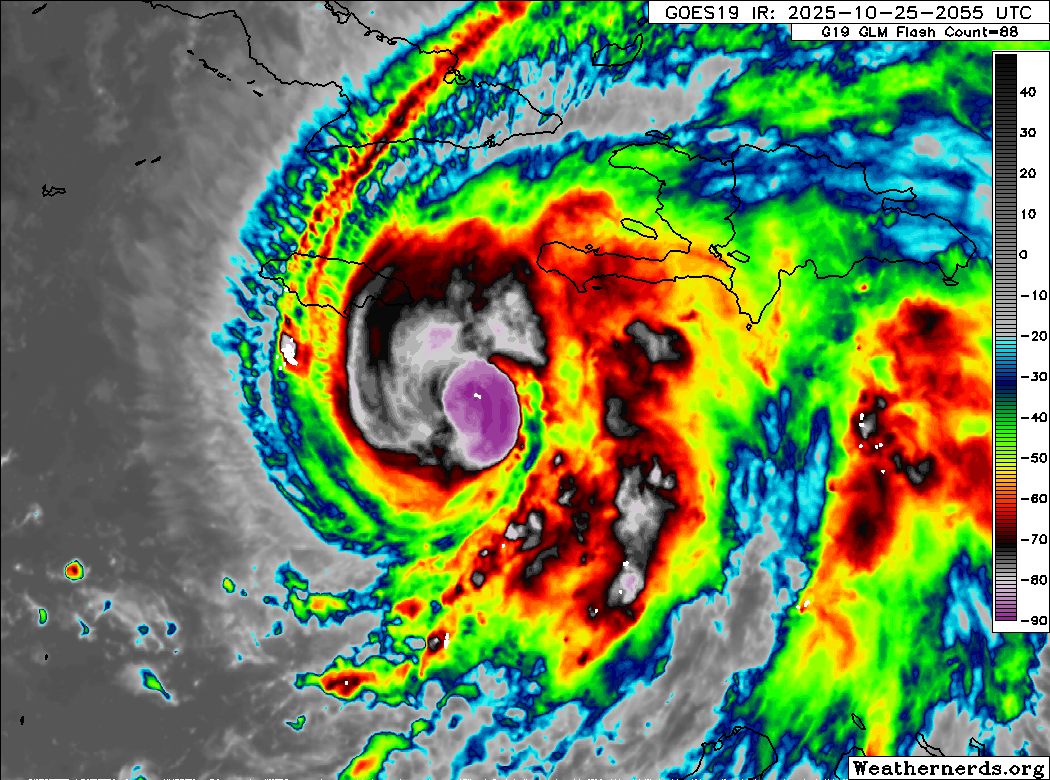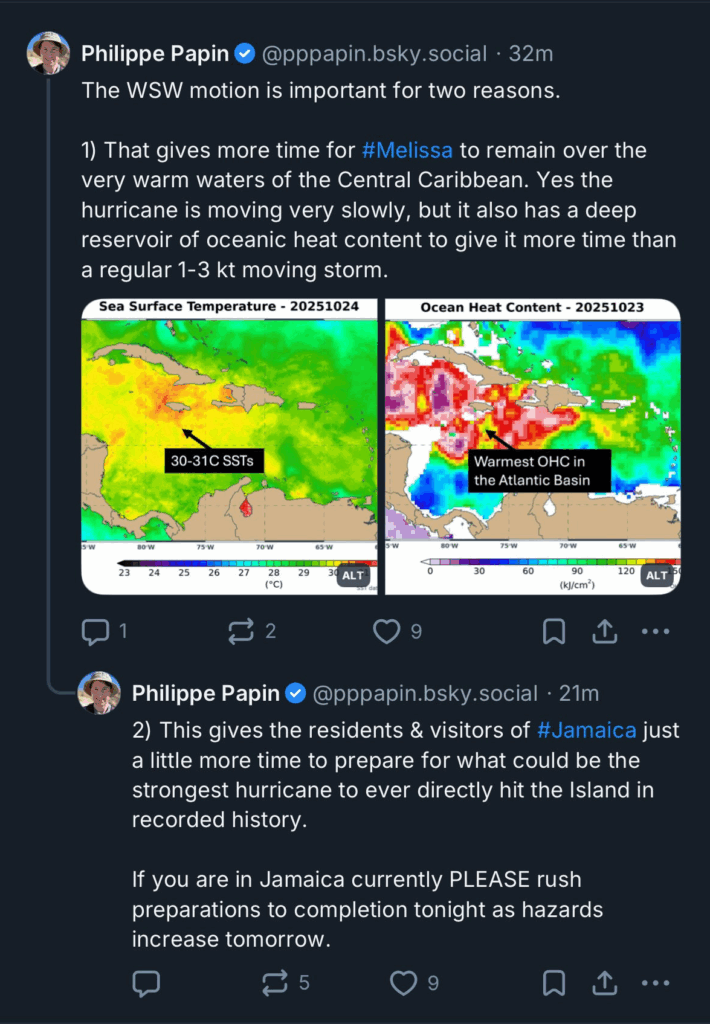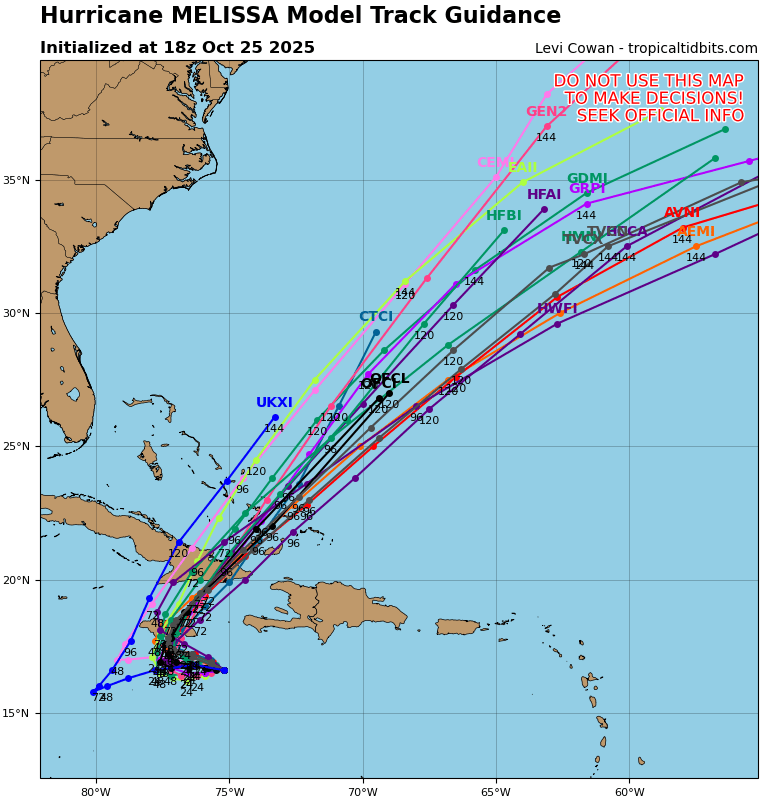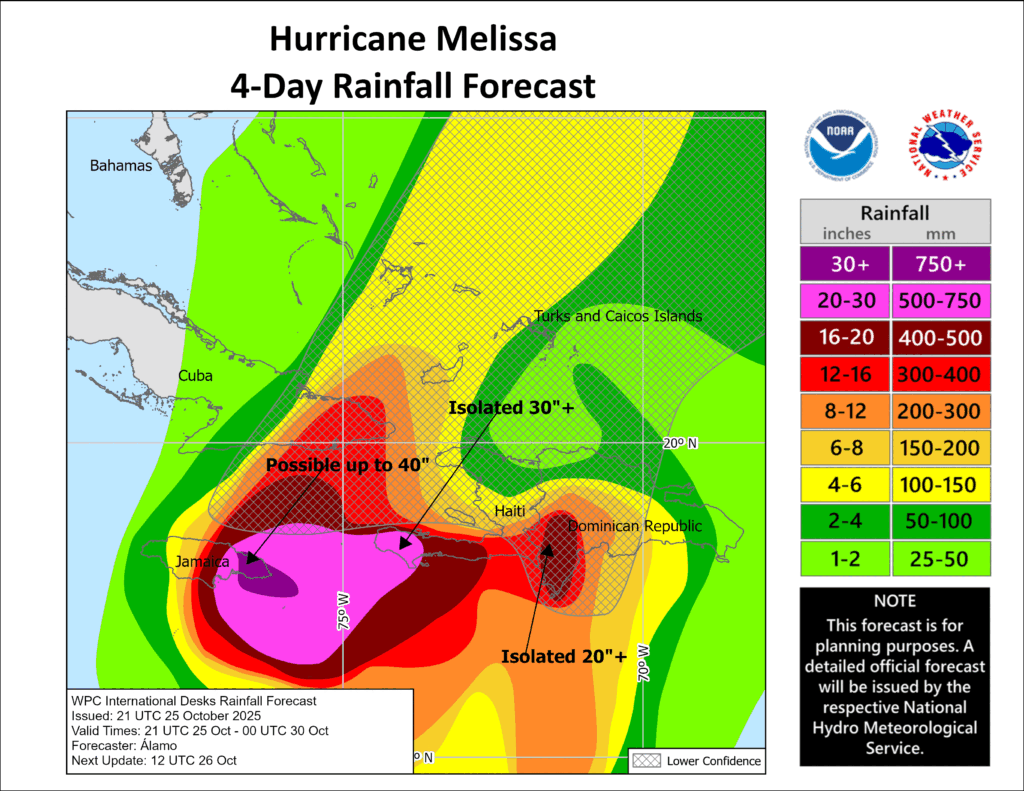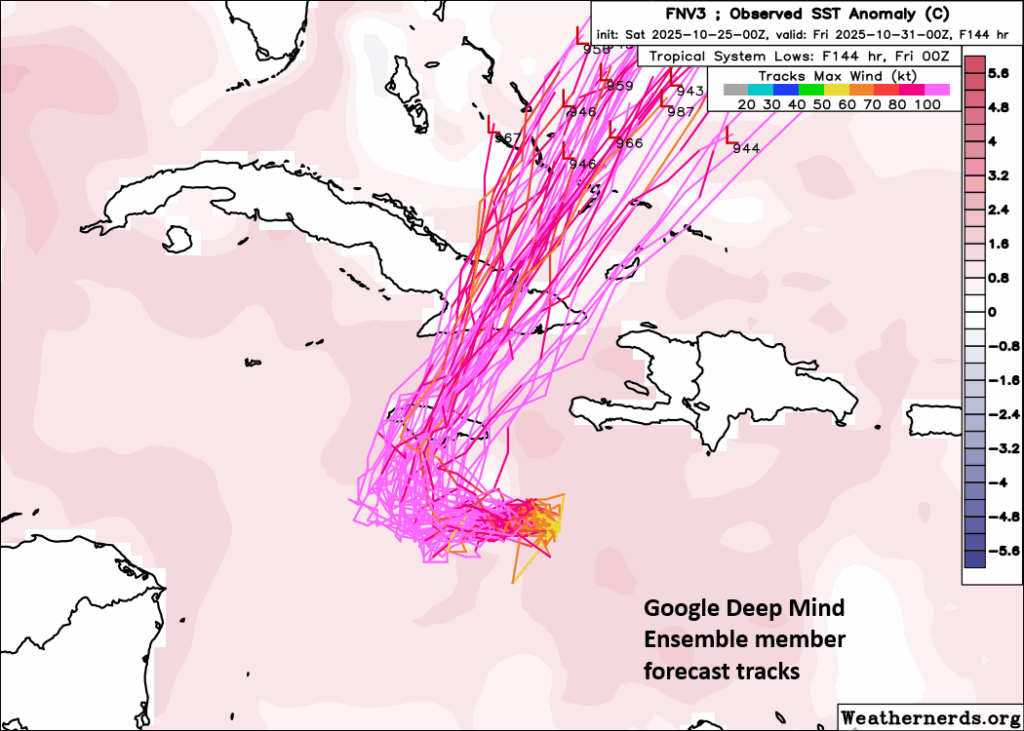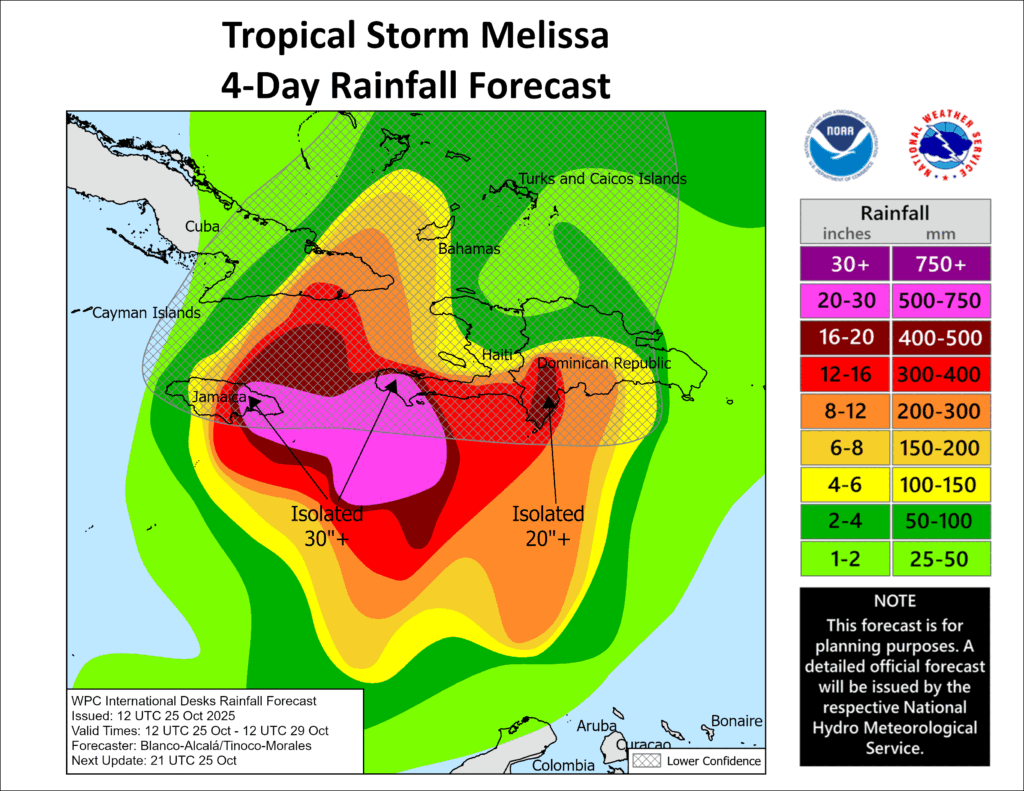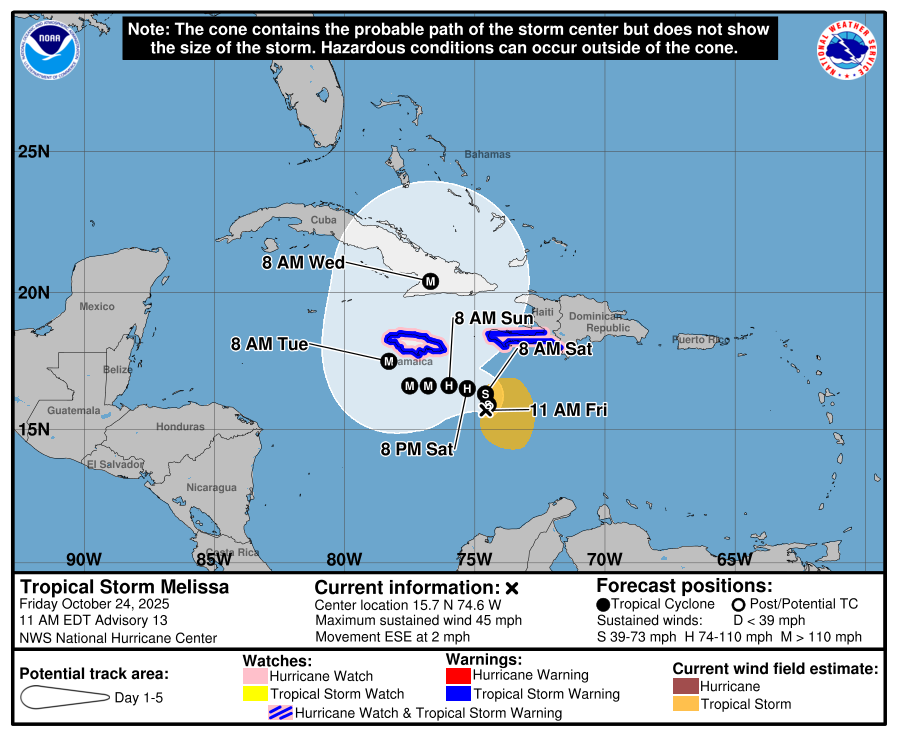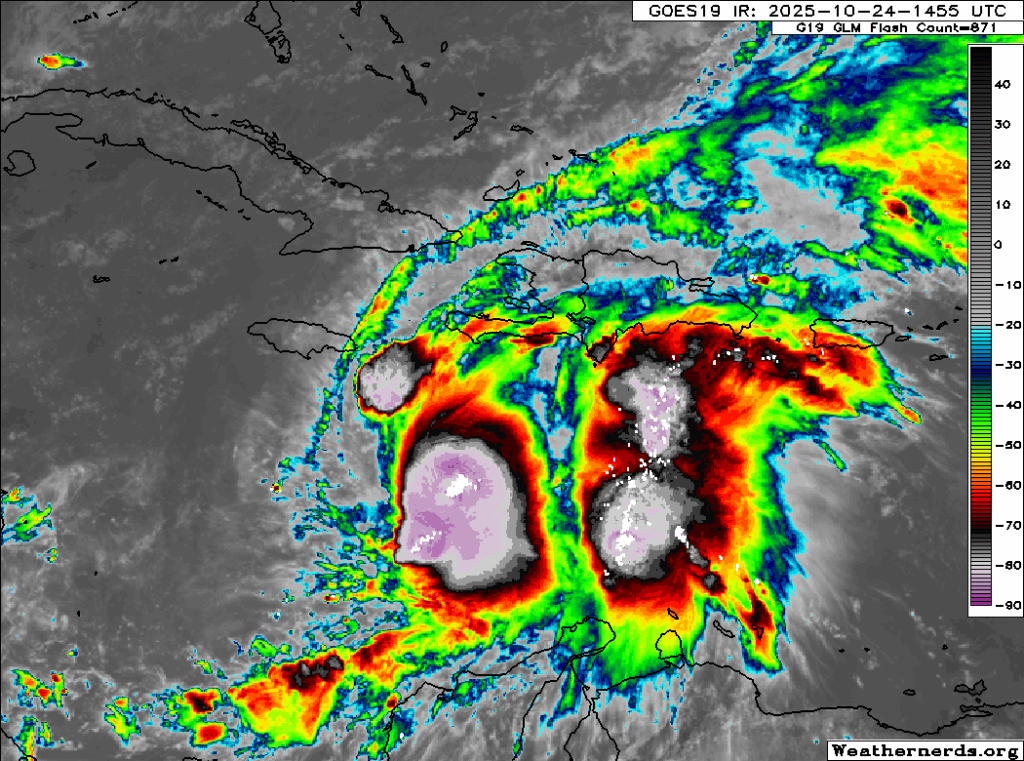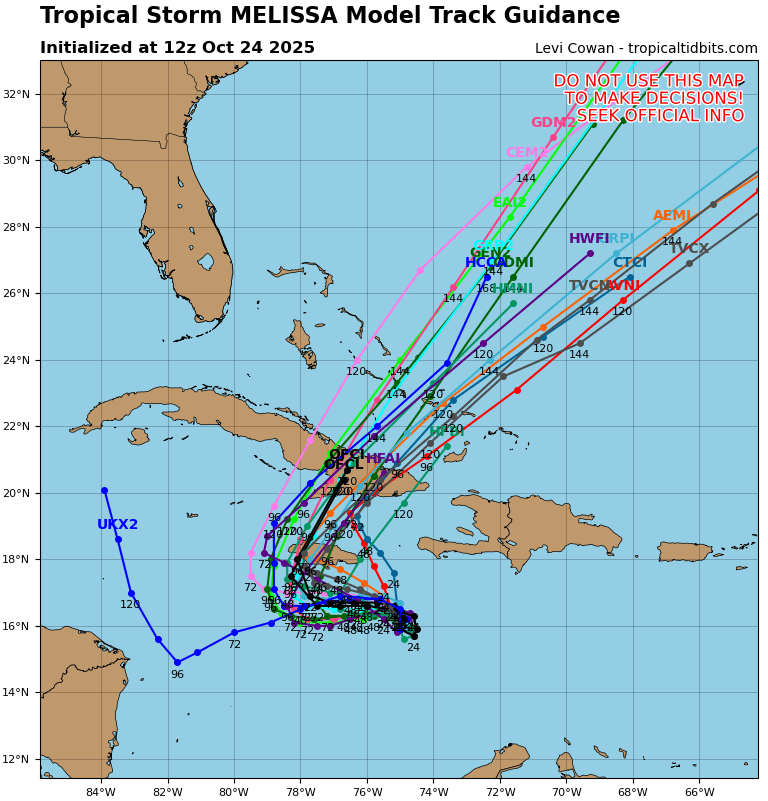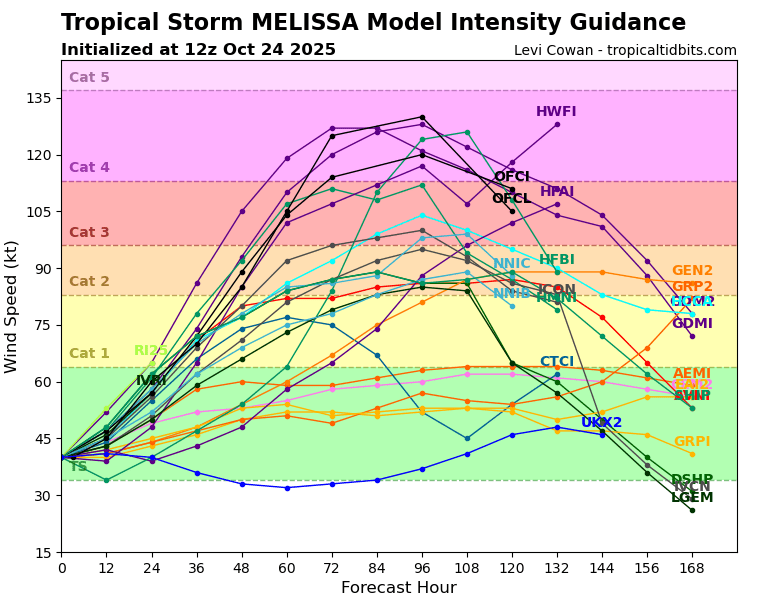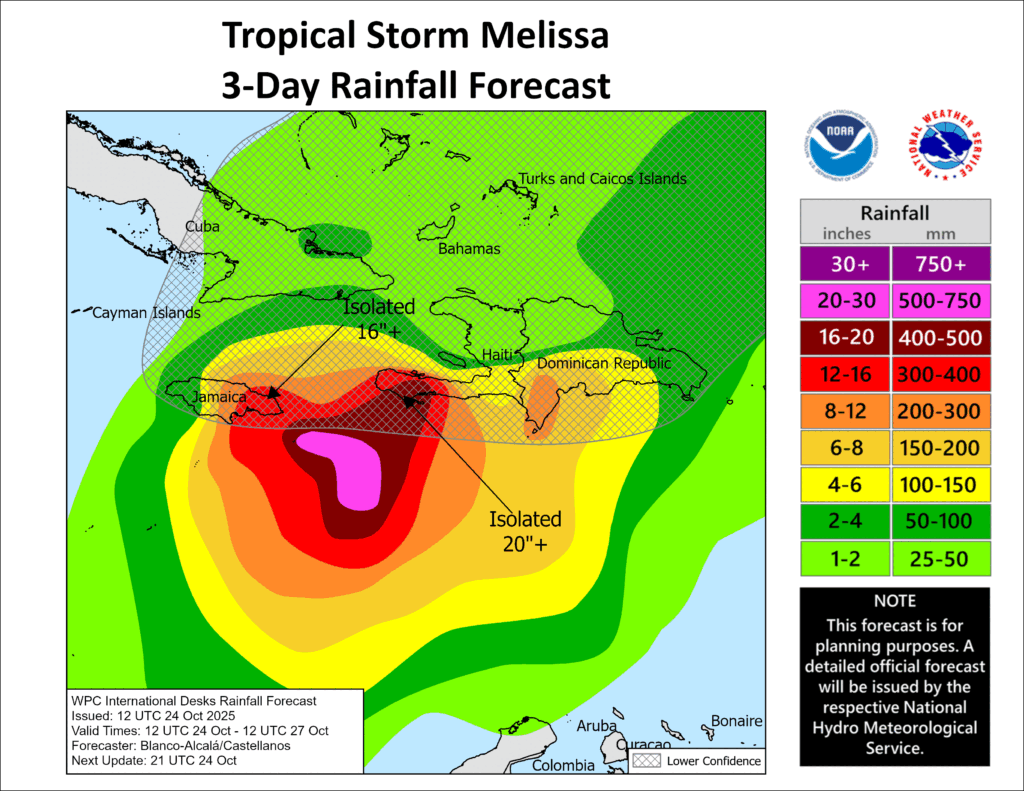In brief: Melissa’s forecast has not changed much at all since yesterday unfortunately. The storm should slowly crawl south of Jamaica through tomorrow before turning north and hitting the middle of the island directly as a high-end major hurricane, possibly the strongest in Jamaica’s known history. Catastrophic impacts from surge, wind, and multiple days of torrential rain are likely. A slightly less intense (but likely still major hurricane) storm will hit eastern provinces of Cuba on Tuesday night and Wednesday morning with severe impacts. Significant impacts are likely in the southeast Bahamas and perhaps Turks and Caicos Islands as a borderline major hurricane passes by on Wednesday. Bermuda should remain on alert for tropical storm or hurricane impacts by Friday.
Melissa surges to category 4 intensity
It feels like it has become routine in recent years to witness storms going from disjointed to mammoth in just a day or two, and Melissa has done nothing to squelch that feeling. Just 24 hours ago, we had a modest storm spinning up, and today we are left with a storm closing in on becoming a monster as it traverses the warmest water in the Atlantic basin.
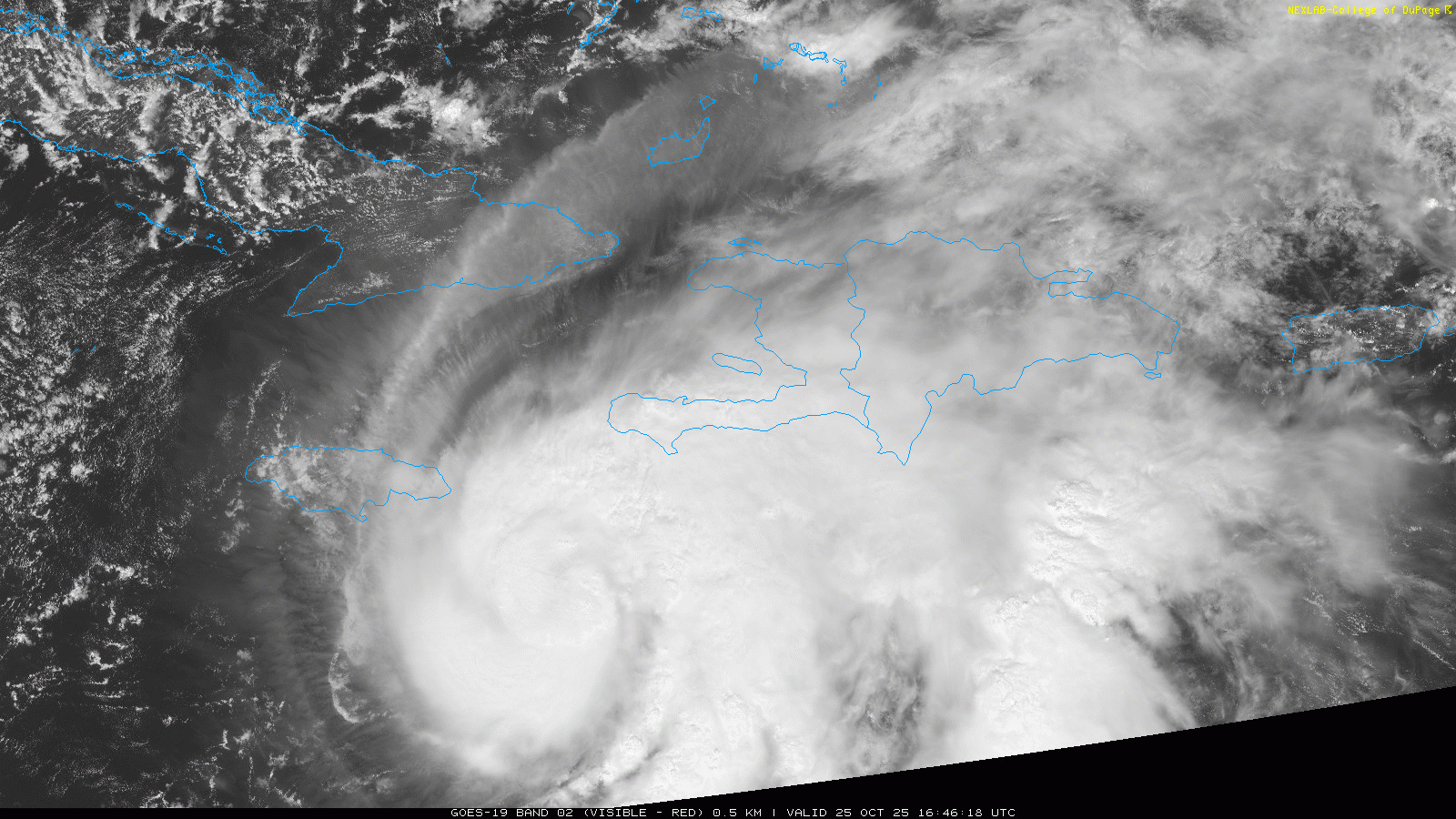
As noted last night, Melissa did move to the southwest a bit, which all but guarantees it will come into Jamaica as a high-end major hurricane tomorrow night and Tuesday morning. Melissa has sort of leveled off intensity-wise this morning, and we could see internal processes lead to some fluctuation in intensity today or tomorrow. Frankly, that’s just background noise more than anything, and the expectation is that we will probably have something close to a category 5 hitting Jamaica from the south Tuesday morning.
For details on storm surge, I recommend checking out Michael Lowry’s post this morning on that. He has a nice breakdown of what could end up happening.
Over the next 24 hours, Melissa will continue off to the west before it slams on the brakes and turns north and north-northeast, plowing right into Jamaica likely somewhere west of Kingston and east of Montego Bay. From there, it should continue off to the northeast and into Cuba. Landfall there looks to be between Las Tunas and Guantanamo. Melissa will likely be a bit less intense when it gets to Cuba, but it should still be a formidable, destructive major hurricane.
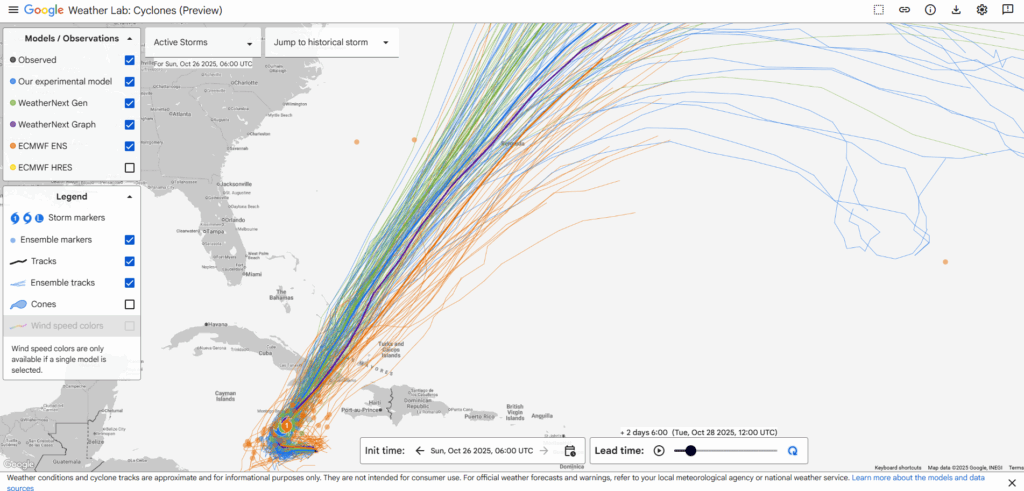
Next up for Melissa will be the Bahamas. Model guidance gets a little fishier on timing here. Landfall in Cuba should occur roughly around midnight or just a little later Tuesday night and Wednesday morning. It will emerge through the Bahamas and Turks and Caicos Islands during the day on Wednesday with deteriorating conditions probably around or just before sunrise Wednesday. As it moves through the Bahamas, it will probably be below major hurricane intensity, but it should still be a rather potent storm in that area. Melissa should pick up additional forward speed, exiting the Bahamas and Turks and Caicos quickly by Wednesday night. The track spread widens some beyond that, but Bermuda remains in the realm of possibility. Folks should keep monitoring the situation there, however although hurricane impacts are possible, the storm will be a much different and less intense system by then. Some of the predicted times here could fluctuate 12 to 18 hours in either direction as Melissa’s end game becomes clearer.
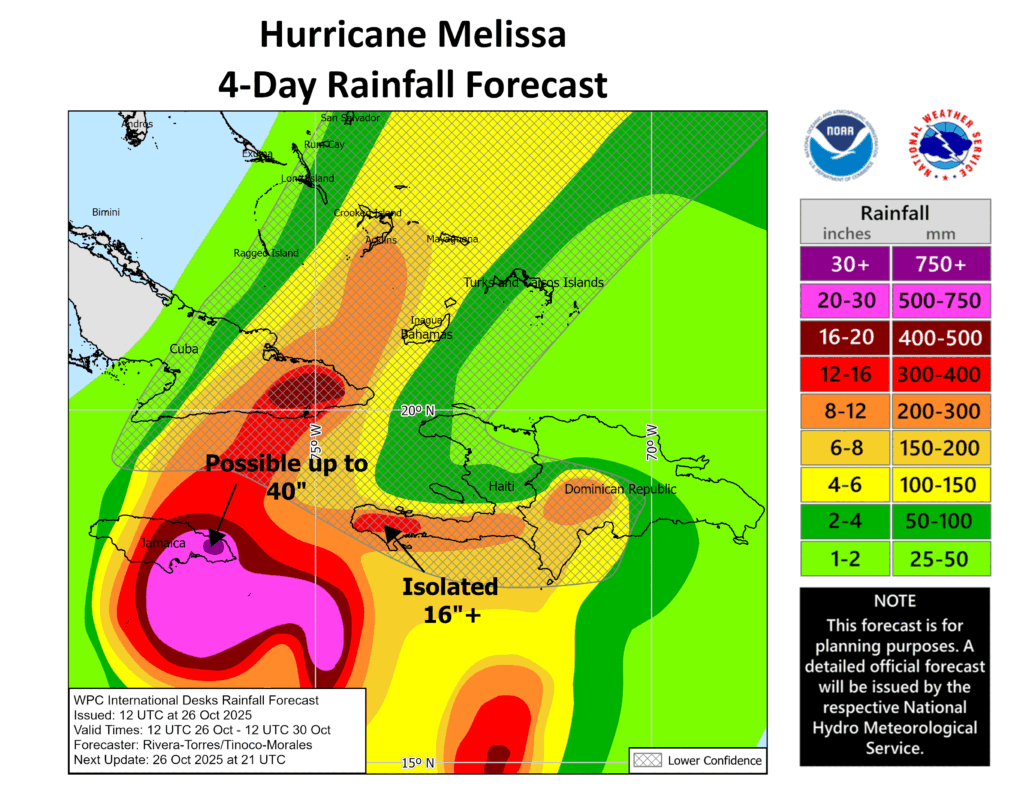
The rainfall forecast remains just awful. Additional rain on top of what has fallen could be as much as 40 inches in eastern Jamaica (1,000 mm). Many areas will see 20 to 30 inches more, however. And most of this falls before the catastrophic wind and surge arrives. This is truly just a nightmarish type of worst-case scenario for Jamaica. Copious rain will make certain structures and infrastructure additionally vulnerable to already terrible hurricane conditions. In Haiti, rains will continue that could add up to another 15 to 20 inches in spots (375-500 mm) on the Tiburon Peninsula. As Melissa turns north, heavy rain will overspread eastern Cuba as well, perhaps adding up to 15 to 20 inches (375-500 mm) in Guantanamo, Santiago de Cuba, and Holguin. Rain of 6 to 10 inches is possible in the southeast Bahamas.
So, to summarize all this:
- A historic, catastrophic storm is on tap for Jamaica with copious rain and some of the strongest winds experienced in modern times possible in many parts of the country. This will likely require a robust multi-national humanitarian response.
- Continued rain may cause catastrophic impacts in southwest Haiti.
- Severe impacts are likely in eastern provinces of Cuba, with a major hurricane (past peak) making landfall on Tuesday night or Wednesday, along with torrential rain in Guantanamo and Santiago de Cuba.
- Significant impacts are likely in the southeast Bahamas and perhaps the Turks and Caicos on Wednesday as Melissa loses some intensity and pass through. It may still be a borderline major hurricane as it hits the islands.
- Bermuda should be on watch for potential hurricane or tropical storm impacts by Thursday night or Friday.
Planning our next post Monday morning unless something changes significantly.
